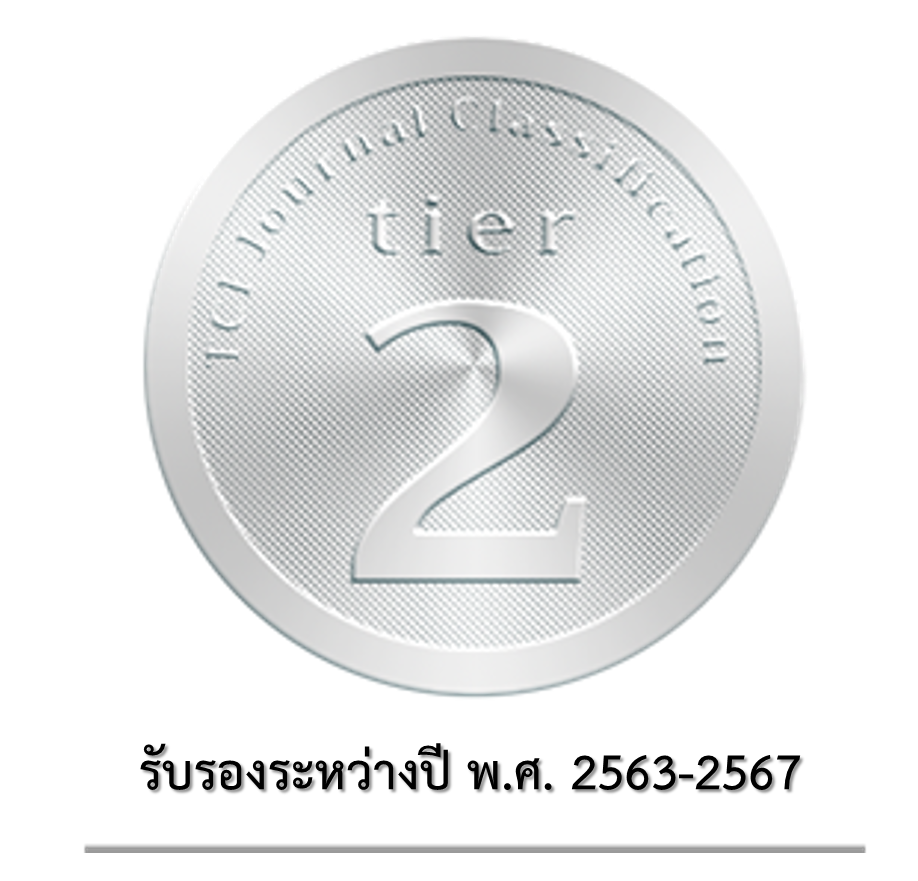ผลกระทบจากการกักกันตัวทางการแพทย์ในวอลเปเปอร์สีเหลืองของ ชาร์ลอต กิลแมน
##semicolon##
เรื่องเล่าความเจ็บปวด##common.commaListSeparator## สิทธิของผู้ป่วย##common.commaListSeparator## การกักกันตัวทางการแพทย์Abstract
“วอลเปเปอร์สีเหลือง” ของ ชาร์ลอต กิลแมน เป็นหนึ่งในตัวบทวรรณกรรมที่ตั้งคำถามต่อความชอบธรรมของแพทย์และสถานพยาบาลในการบังคับใช้การกักกันตัวผู้ป่วย โดย จุดประสงค์ของบทความนี้ มุ่งวิเคราะห์ผลกระทบ 3 ส่วน จากการถูกกักกันทางการแพทย์ คือ 1) ผลกระทบในด้านเสรีภาพส่วนบุคคล 2) ผลกระทบต่อสถาบันครอบครัว 3) ผลกระทบทางเศรษฐกิจ โดยการศึกษาในครั้งนี้ ผู้วิจัยได้ เลือก ทฤษฎีเรื่องเล่าความเจ็บปวด เป็นกรอบที่ใช้ในการวิเคราะห์ตัวบท บทสรุปของการศึกษาชี้ให้เห็นว่า แม้ว่าบรรดาคณะแพทย์จะยังไม่มีความรู้ความเข้าใจที่เพียงพอในการรักษาและตอบสนองโรคอุบัติใหม่ แต่สถานภาพทางสังคมและความรู้ที่สูงกว่าของแพทย์นั้น ทำให้แพทย์สามารถสร้างความชอบธรรม ในการบังคับใช้แนวทางการรักษาที่อาจส่งผลกระทบกับสิทธิเสรีภาพของบุคคลทั่วไป ในส่วนผลกระทบด้านสถาบันครอบครัว การศึกษาสะท้อนให้เห็นว่า แพทย์ควรหลีกเลี่ยงการให้การรักษาผู้ป่วยซึ่งเป็นสมาชิกในครอบครัวเพราะจะขัดต่อหลักจรรยาบรรณแพทย์ ในประเด็นผลประทบทางเศรษฐกิจนั้น ผู้ป่วยมิควรถูกจำกัดบทบาทให้อยู่แต่ในบริเวณบ้านเท่านั้น ประโยชน์ที่ได้รับจากการศึกษาผลกระทบจากการกักบริเวณผู้ป่วยอย่างไม่เต็มใจ ในครั้งนี้ จะทำให้บุคลากรทางแพทย์มีความเข้าใจ และเห็นอกเห็นใจผู้ป่วย ในฐานะมนุษย์มากยิ่งขึ้น อีกทั้งควรมีการปรับปรุงสิ่งแวดล้อมที่ในสถานที่กักกันให้เหมาะสม โดยคำนึงถึงสวัสดิภาพทั้งทางร่างกายและจิตใจของผู้ถูกกักกันด้วย
##submission.citations##
AMA council of Ethical and Judicial Affairs. (2012). Self-treatment or treatment of immediate family members. Retrieved 6 Febuary 2023, from https://journalofethics.ama-assn.org /article /ama-code-medical-ethics-opinion-physicians-treating-family-members/2012-05
Bergman, J. (2017). Charlotte Perkins Gilman and a woman’s place in America. The University of Alabama Press.
Bondi, L. (1992). “Gender and dichotomy”. Progress in Human Geography. 6(1), 99.
Canguilhem, G. (1991). The normal and the pathological, 40.
Clive, J. (1989). The Yellow Wallpaper [film]. British Broadcasting Corporation.
Crewe, J. (1995). Queering the Yellow Wallpaper? Charlotte Perkins Gilman and the Politics of Form. Tulsa Studies in Women’s Literature. 14(2), 273-293.
Delamotte, E. (1988). Male and Female Mysteries in “The Yellow Wallpaper”. Legacy. 5(1), 3-14.
Fyre, C. (1998). Using Literature in Health Care: Reflections on “The Yellow Wallpaper”. Annals of Phatmacotherapy, 32(7), 829-832.
Golden, C. (2007). Making her territory: Feline Behavior in “The Yellow Wallpaper”. American Literature Realism. 40(1), 16-31.
Maccann, W. (1952). “The meaning of disease”. Journal of the California Medical Association. 77(3).
Meier, A. (2016). Death by Wallpaper: The Alluring Arsenic Colors that Poisoned the Victorian Age [ Review of the book Bitten by witch fever: wallpaper & Arsenic in the Nineteenth-century Home by Lucinda Hawksley]. hyperallergic. Retrieved 6 Febuary 2023, from URL: https://hyperallergic.com/329747/death-by-wallpaper-alluring-arsenic-colors-poisoned-the-victorian-age/
Pontuti, K. (2021). The Yellow Wallpaper [film]. Emerald Giant Productions.
Singer, M. (2007). Introducing Medical Anthropology: A Discipline in Action, 80-81.
The US Department of Health and Human Services. (2022). What is the difference between isolation and quarantine. Retrieved 10 Febuary 2023, https://www.h hs.gov/answers/public-health-and-safety/what-is-the-difference-between-isolation-and-quarantine/index.html
Thomas, L. (2012). The Yellow Wallpaer [film]. Production Company unknown.
Treichler, P. (1984). “Escaping the sentence: Diagnosis and Discourse in the Yellow Wallpaper”. Tulsa Studies in Woman’s Literature, 3(1-2), 61-77.
##submission.downloads##
Published
##submission.howToCite##
Issue
Section
##submission.license##
##submission.copyrightStatement##
##submission.license.cc.by-nc-nd4.footer##


